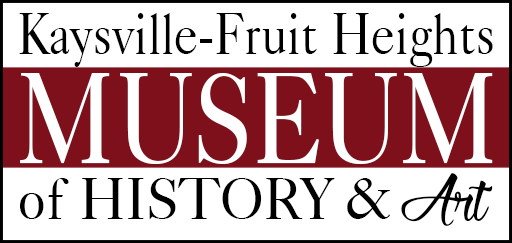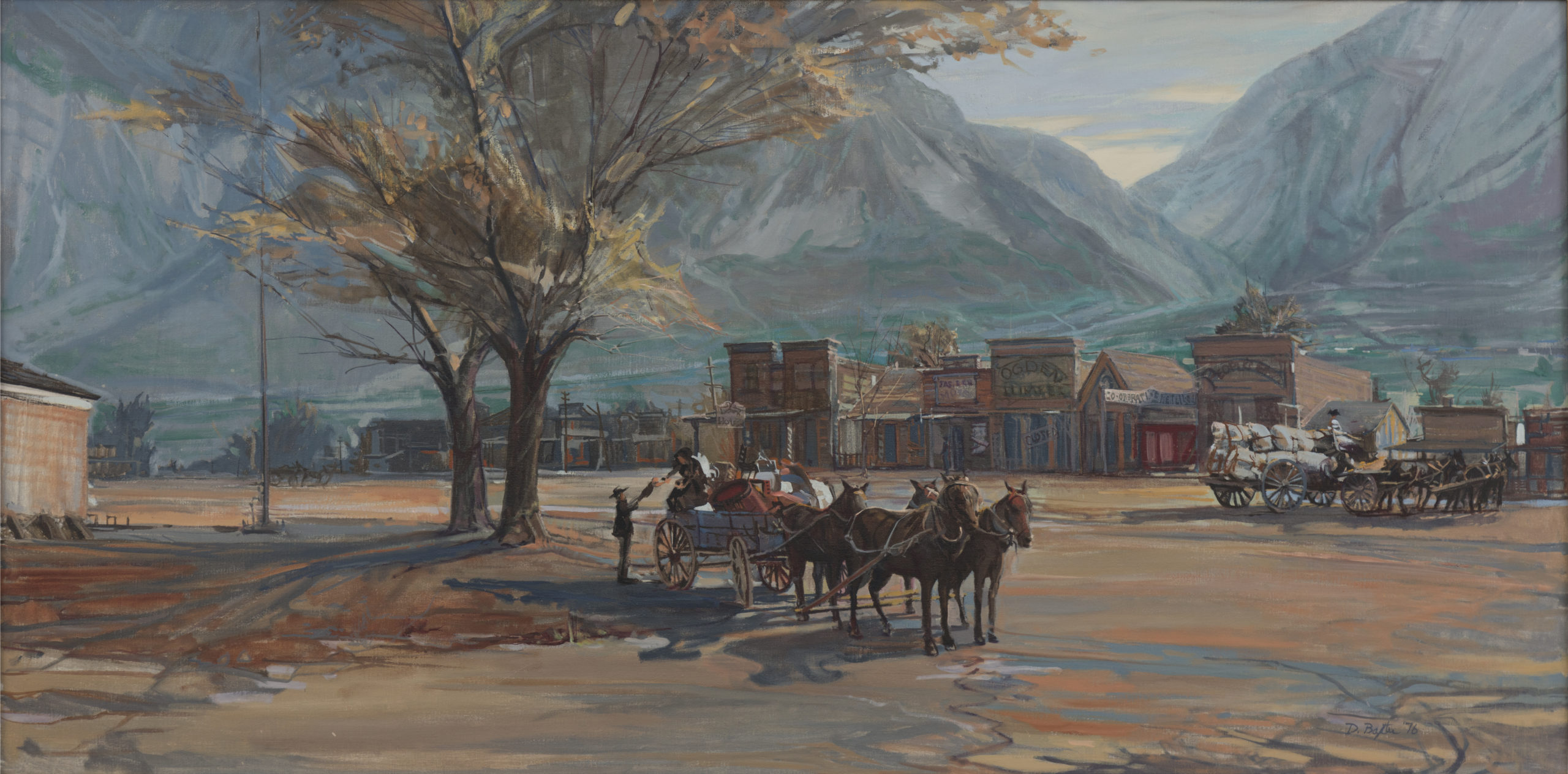1976 Exhibit Brochure
In the spring of 1858, the residents of Ogden evacuated their city with every intention of destroying all that had been built in a decade of settlement if Johnston’s Army should prove to be another persecutor.
2023 Exhibit Guide
In 1857, President James Buchanan sent 2,500 soldiers, led by Albert Sidney Johnston, to Utah following reports of treasonous behavior from Mormon settlers. LDS Church leaders ordered the evacuation of the settlements before the federal troops arrived.
It took a year for the troops to enter Utah territory, and, in the spring of 1858, the residents of Ogden evacuated their city with every intention of destroying all that had been built in a decade of settlement if Johnston’s Army should prove to be another persecutor.
The settlers camped in the region between Provo and the Great Salt Lake before receiving word from Governor Brigham Young that it was safe to return home. Baxter’s painting depicts the deserted Ogden City.
Kaysville Area Connections
In 1857, Bishop Allen Taylor led the evacuation of Kaysville to Utah County. Families packed up and traveled with as much as they could. They camped for a few months and then most returned.
Young men from the Blood and Galbraith families were left behind to guard homes and belongings. Their instructions were to burn “everything that would burn1” if the army approached in a threatening manner in order to destroy any resources the army could use.
Artist
Dan Baxter (1948-1986)
Dan Baxter attended the University of Utah on several scholarships for art, academics, and gymnastics and graduated with a Bachelor of Fine Arts degree in 1973. After a brief teaching period at the University of Utah, Baxter was encouraged by one of his professors, Alvin Gittins, to study at the Art Students League in New York, which he did, receiving an outstanding student certificate.
Baxter demonstrated skill in landscape and still-life paintings, but he is most well-known for his figurative paintings and portraiture. Baxter painted several murals for the LDS church, and he won many awards for his art throughout his career, including from the National Academy of Design.
Sources
- “Bicentennial Historical Art Collection.” 1976 Exhibition Brochure, Special Collections, Weber State University.
- Eyes Toward the Past. DVD.
- Karras, Marilyn. “President Orders Troops to Region”. The Ogden Standard Examiner, 10 Oct. 1976, Sun.
Citations
- Hill, Ivy Hooper Blood, compiled and edited. “A Life Sketch of William Blood; taken from his diary by William Blood and his daughter Mary Hooper Blood Linford.” Contained in William Blood, his Posterity and Biography of their Progenitor, November, 1961. J. P. Smith and Son; Logan, pg 23-50.
Notes
Copyright owned by Weber State University Storytelling Festival. All rights reserved. Painting shown by Kaysville – Fruit Heights Museum with permission. Painting number 11 in the 2023 exhibit guide.


